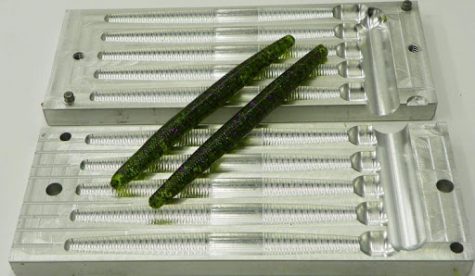Finesse Fishing
October 19, 2020
When the heat of the summer causes bass to be sluggish, they won’t bite at everything they see. When presented with a difficulty such as this, the angler must get creative. This can be done in a variety of ways, but most commonly this is done using soft plastics that replicate smaller insects or creatures appealing to a largemouth bass. The popularity of “slowing down” your fishing during hot summer days has skyrocketed in the past 30 years, and it’s no surprise why.
During the mass industrialization boom in the 1950s and popularization of plastic as a means of production of household goods, the fishing industry began a slow transition from balsa wood baits to a mix between

traditional wooden lures and artificial plastic baits. This was a turning point in the fishing world, as these widely produced and inexpensive lures could be bought in a variety of colors, shapes, sizes, and scents. Often sold in packs of six, plastics became a staple of bass fishing, used by everyone from the casual weekend angler to the Major League Fishing professional. As time went on, manufacturers began experimenting with changing the salinity of the plastic poured into the molds and found that the higher the salt content, the heavier the baits would be, thus affecting the underwater action, appealing to many anglers attempting to get a bass to strike after looking at the lure for awhile underwater, considering whether or not to strike.
On a 90-degree summer day, it is likely for the water to be far hotter than normal, which in turn, causes bass to enter a less aggressive state, as they have to expend more energy to perform the same actions they do on a daily basis, and they won’t always attack the same targets they would on a temperate day, since they need to spend their calories more efficiently. When using a soft plastic lure, the angler can narrow down every aspect of how he wants his underwater presentation to look to the fish, pinpointing every detail to his liking.
When fishing during the summer, a common phrase one might expect to hear is “slow down your fishing.” This is a very effective way in assuring that a bass has had every chance to feed on what you are presenting to it. Since a fish is less likely to chase bait in these conditions, it is important to give it many opportunities to consider going after your lure. There is nothing wrong with casting in the same exact spot 10 times in a row with the same lure. It gives the bass many chances to attack, which in turn increases your chance of hooking up. Attacking a spot from many angles is also an important strategy that can turn a slump into a great day on the water.
Recreational angling during the summer is an American pastime dating back to the early-1800s, and the woes associated with hot days and bad fishing don’t have to be a reality. By following the simple strategies laid out in this article, an angler can expect to catch a master angler bass come next July.